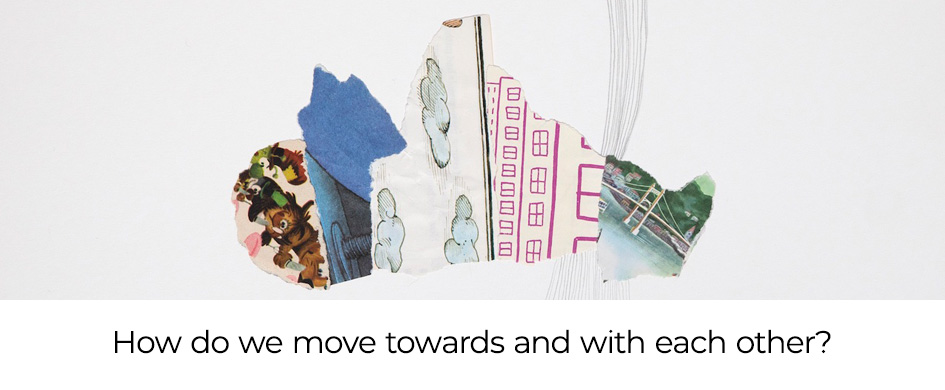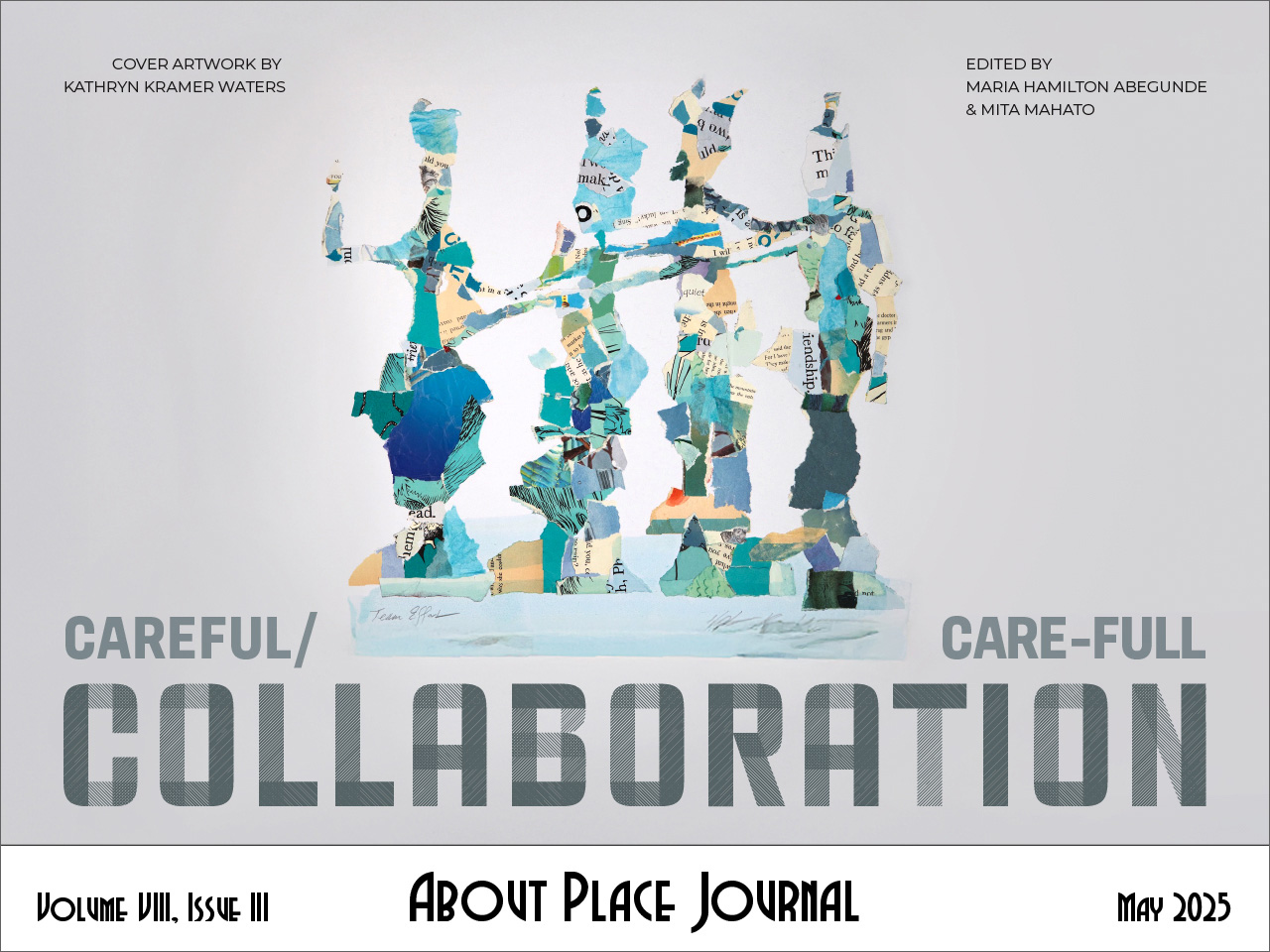How do we move towards and with each other?
In a world that is simultaneously disconnected and overconnected due to technology and its endless flood of information, it’s wonderful to see numerous poets and artists work so thoughtfully together, even over long distances. We’ve been lucky to receive such beautiful and unique projects in which the artists have moved across virtual (and other) landscapes to connect with one another through careful collaboration.
For example, I was inspired by Carol Dorf and Athena Kildegaard’s poem, “The Intimate Distances,” which was created using what they called the “magic square.” This six-by-six table, developed around the theme of heart, was one of the many engaging collaborative processes described in this issue of the journal. To me, it isn’t just inspirational because it’s inventive, but I admired how it was used as a resource in the face of grief. Though the two poets were geographically far apart, they moved towards each other in careful/care-full collaboration; with play and care through imaginative and intuitive activities, they were able to shine a light in the murky grey of hardship. It wasn’t only a creative outlet, but an emotional one. While filling it out, they wove their thoughts together, moving back and forth between each other’s experiences, to form the final art piece. And with that, they pushed their poetry so it moved through conduits of creativity, solace, and connection no matter how far away, making the distance seem more intimate than vast. Before reading this section, I had never thought to write poems back and forth over email, let alone create a beautifully intricate table in order to write almost a dozen of them.
What virtual creative activities like this one teach us is that, especially in a time where capitalism or able-bodiedness may be more directive of where you can move physically, we can still move toward careful/care-full collaboration. We have the ability to not just move towards each other from these vast distances; we can also move with each other into more hopeful futures. I have found that hopefulness after reading the works in this journal. In this section, I was shown that the ways we move each other – and move towards and with each other – are how we build bridges across the gaps of apathy. This suggests that knowing, being moved into a solid place of understanding no matter the distance, is the way we can access humanity and improve it. I have been so moved, not just by the work in the journal, but by the caring hands that have helped me through this editorial process.
I want to thank Abegunde, Mita, Matty, and Michael for the time and care they have put into editing the journal, especially with the extra work it’s taken to make sure everything runs smoothly with this issue and its unique layout. Thank you for shining that light of hope, bringing me into your circle of care, and reinforcing the love I have for people and the Earth. I am truly honored to have worked alongside you all.


